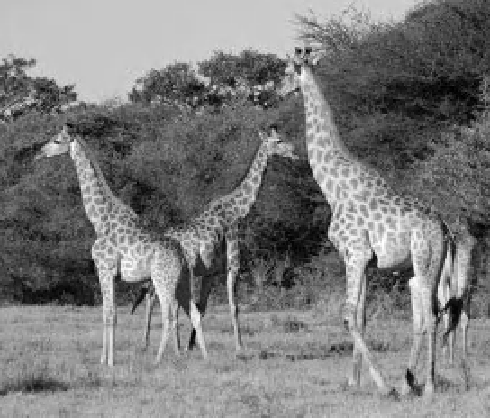Geoscience Reference
In-Depth Information
The subsequent demand for fresh water from
riparian users is bound to increase over the next
decade. Complicating this equation is the fact
that the Okavango l ows through three extremely
arid countries with different development
priorities.
Of the waters that enter the Okavango Delta,
more than 90 percent originates in the Angolan
highlands through rainfall (OKACOM 2011).
Approximately 96 percent of this is lost to eva-
potranspiration or through consumptive use,
two percent percolates underground and the
remaining l ows at the surface (in Ellery and
McCarthy 1998). The diversion of water upstream
in any of the countries would inl uence l ows
into the delta and other downstream users. Rec-
ognizing the vital importance of this shared
resource, the governments of Angola, Namibia
and Botswana accept the need for Integrated
Water Resource Management (IWRM), which
considers the issue from a whole-ecosystem per-
spective and includes multiple stakeholders
when seeking sustainable management solu-
tions (Heyns 2007).
The Permanent Okavango River Basin Com-
mission (OKACOM), a multilateral institution
with representatives from the three riparian
states formed in 1994 and seeks to coordinate
management and water development efforts.
OKACOM expects that shared governance of
this resource could help arrive at agreed-upon
sustainable use strategies and equitable fresh-
water allocations as well as improve water
infrastructure and offer water-conservation and
pollution-prevention alternatives (OKACOM
2011). Similar multilateral institutions would be
critical in managing shared fresh-water resources
and adjudicating conl icts that may arise between
riparian users in the twenty-i rst century.
Figure 15-6.
Giraffes (
Giraffa camelopardalis
) in the
Okavango Delta. Photo courtesy of M. Storm.
Figure 15-7.
Wild adult female African lion (
Panthera
leo
) in the Okavango Delta. Photo courtesy of M. Storm.
southern Africa. Humans have undoubtedly had
an intermittent, yet long-standing and com-
plex relationship with the delta. As the region
experiences greater demands for water from
locally expanding human settlements, agro-
pastoral development and upstream diversions
of the Okavango River, water availability issues
for the delta have become quite signii cant since
the end of the twentieth century. Population
within the greater Okavango basin was a little
over 1.1 million people in 2000, and is expected
to rise to 1.6 million by 2020 (OKACOM 2011).
15.4 Pantanal of South America
The Pantanal of South America (derived from
the Portuguese word
pântano
and translating as
swamp or bog) comprises one of the largest
fresh-water wetland sites in the world (Fig.
15-8). It extends over roughly 160,000 km
2
of
seasonally l ooded savanna grasslands, forests







